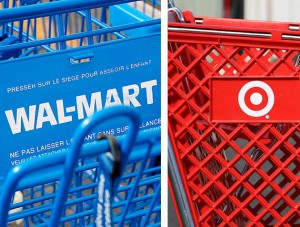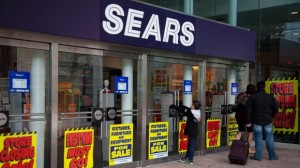“If the United Nations was fully funded why would we need the Arc or social enterprise”?
The United Nations is one of the world’s most vital and powerful organization. However, due to its power and influence, it is mainly dedicated in resolving macro problems like world peace and various conflicts. For such a large organization, it is impossible for it to address many of the less pressing micro issues. I believe it is therefore necessary for social en terprises and programs like the Arc Initiative to exist even if the United Nations was fully funded.
terprises and programs like the Arc Initiative to exist even if the United Nations was fully funded.
Since larger organizations generally do not deal directly with the ones involved, their help is oftentimes small, short-lived, and rendered somewhat useless to many that need help. Oftentimes the help is provided just for the sake of doing something, and not a lot of though is put in on whether the help will be beneficial in the long run or not. Uwonkunda, a leader in the Arc Initiative program in Rwanda even mentioned that “non-profits that have donated money to Rwanda following the war [did not] make a lasting impact.” Programs like the Arc Initiative and social enterprises are powerful because they directly educates people in impoverished areas, and unlike larger organizations, the help they provide is long-lasting and useful as they are teaching skills in addition to providing help. These services have a unique and common goal of wanting to improve the future lifestyles of the people, by giving them the means of doing it themselves and not just “sponsoring” them, because that ultimately will not solve the problem. Both the United Nations and programs like the Arc and social enterprises are fundamental in creating equal opportunities around the world, it just depends on the situation to see which will provide the better aid.
References:
Picture from: http://static.guim.co.uk/sys-images/Guardian/Pix/pictures/2013/11/19/1384876037021/social-enterprise-wordle–009.jpg

 r the years was because the low quality of their food could be justifiable by its equally low prices. However, now, after the price increases, I personally would not prefer to go to McDonald’s over other fast food chains if I have to pay more than
r the years was because the low quality of their food could be justifiable by its equally low prices. However, now, after the price increases, I personally would not prefer to go to McDonald’s over other fast food chains if I have to pay more than  delivery, they would be forgoing the whole experience of walking in the store and interacting with the employees, and in theory only be getting the coffee. Coffee shops in history were not a place necessarily made just to drink coffee, but more as a meeting place for people to have meaningful intellectual conversations in. Though that idea has shifted over the years, it still serves as a place for people to rewind after a long day and meet up with friends or clients. I believe that people do not go to Starbucks because their coffee is “incomparable” to other shops, but more so for the experience itself. So would people be willing to pay the additional delivery fee on top of the already pricer price just to drink their maybe now “cold” coffee at home? At least I would not. If people did not care about the experience at all, they might as well just invest in a good coffee maker.
delivery, they would be forgoing the whole experience of walking in the store and interacting with the employees, and in theory only be getting the coffee. Coffee shops in history were not a place necessarily made just to drink coffee, but more as a meeting place for people to have meaningful intellectual conversations in. Though that idea has shifted over the years, it still serves as a place for people to rewind after a long day and meet up with friends or clients. I believe that people do not go to Starbucks because their coffee is “incomparable” to other shops, but more so for the experience itself. So would people be willing to pay the additional delivery fee on top of the already pricer price just to drink their maybe now “cold” coffee at home? At least I would not. If people did not care about the experience at all, they might as well just invest in a good coffee maker.

 ptember 21 to sign a treaty in order to put a final stop on the proposal. The treaty is said to address the fear of rising cancer rates near the Alberta oil sands. This article is of direct correlation to how First Nations can serve as an external factor that can significantly influence an organization’s business plan, as many clans hold substantial political power. The article
ptember 21 to sign a treaty in order to put a final stop on the proposal. The treaty is said to address the fear of rising cancer rates near the Alberta oil sands. This article is of direct correlation to how First Nations can serve as an external factor that can significantly influence an organization’s business plan, as many clans hold substantial political power. The article 

 on most of their stores still look the same as they did ten years ago. This alone gives consumers little incentive to shop there given the atmosphere and lack of selection, since competitors like Hudson’s Bay and Target can probably offer better and more varied things with minimal price difference. Even successful businesses, like Sears, need to constantly undergo changes in accordance with the ever-changing consumer tastes in order to become successful even as time passes by.
on most of their stores still look the same as they did ten years ago. This alone gives consumers little incentive to shop there given the atmosphere and lack of selection, since competitors like Hudson’s Bay and Target can probably offer better and more varied things with minimal price difference. Even successful businesses, like Sears, need to constantly undergo changes in accordance with the ever-changing consumer tastes in order to become successful even as time passes by. yet efficient business model is key to growing the company and expanding into new markets. Take Japanese retailer
yet efficient business model is key to growing the company and expanding into new markets. Take Japanese retailer  Bangladesh’s Rana Plaza factory collapse spurs change, finger-pointing
Bangladesh’s Rana Plaza factory collapse spurs change, finger-pointing nor ethics in a business, however, a specific balance is needed in order to help the business develop. Major global corporations, especially, need to set a good example of business ethics for both our economy and society to grow.
nor ethics in a business, however, a specific balance is needed in order to help the business develop. Major global corporations, especially, need to set a good example of business ethics for both our economy and society to grow.